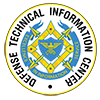Details of Sweden’s 120 mm Mjolner Development Emerge
Manned firing trials of the prototype/demonstrator of BAE Systems Hagglunds’ CV90 twin 120 mm Mjolner mortar system are now underway and it is expected that the Critical Design Review (CDR) will take place by the end of 2017, which will lead to the design freeze and allow production to commence. When completed, the Mjolner system










